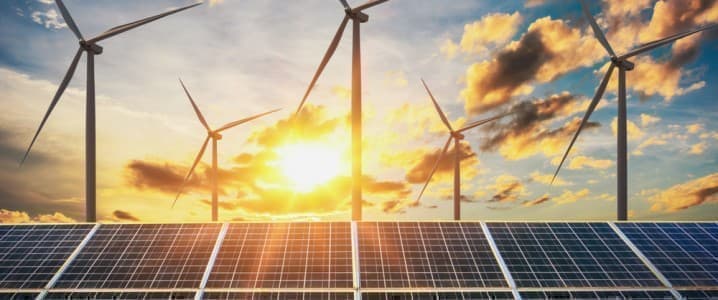Last year, BloombergNEF predicted that by 2030, green hydrogen would become cheaper than all other “colors” of hydrogen. The analytical firm did not supply specific reasons for its forecast, only saying that the current situation in which even blue hydrogen—produced from natural gas—with carbon capture is cheaper than green hydrogen should reverse over the next eight years. This was one of the forecasts that did not age well during the pandemic, what with all the supply chain problems and pent-up demand release that resulted in shortages and higher prices across commodities. The BloombergNEF forecast, like most about the future of low-carbon energy, was based on the assumption that the cost of raw materials for wind and solar will only have one way to go, and that would be down.
In reality, the opposite has been the case.
“The global commodities crunch has created new challenges for the clean energy sector, raising input costs for key technologies like solar modules, wind turbines and battery packs,” said BloombergNEF’s head of analysis, Albert Cheung, in comments on a newer report on investments in the energy transition.
According to the firm, these rose by an impressive 27 percent last year. That’s despite the pandemic and despite the raw material inflation, which, Cheung noted, was “an encouraging sign that investors, governments and businesses are more committed than ever to the low-carbon transition, and see it as part of the solution for the current turmoil in energy markets.” Unfortunately, this may yet change.
The Wall Street Journal reported last month how the inflation that worried the White House and the Fed was also creating headaches for the wind and solar industries. Raw materials for panels and turbines were on the rise, the report noted, reversing the steady downward curve of costs that these industries and their allies in national governments and non-governmental organizations flagged as the guarantee of their long-term success.
“Over the past 10 years there have been three certainties in life: death, taxes and lower prices for solar panels,” Nick Parsons, head of research at Swiss investment firm ThomasLloyd Group, told the WSJ. “It’s not so evident that is the case today.”
It is certainly not the case today, and it might yet get even worse as basically all metals and minerals are either already in deficit or about to swing into deficit for various reasons ranging from long-term processes such as resource depletion and lack of investment in new production to high energy prices that are shutting down aluminum smelter after aluminum smelter.
Related: Soaring Energy Prices Fuel Mayhem For The Metals Industry
Now, the first thing one needs to produce green hydrogen is water to break it down into its constituent elements. The second thing one needs is either a solar farm or a wind park to generate the electricity necessary for this breakdown process. Powering hydrolysis with hydropower is also a low-carbon option, but it has not been garnering so much attention in green hydrogen discussions as wind and solar.
The electrolysis process is an expensive one. Its chance to become competitive with fossil fuel-derived hydrogen was to either see the costs of wind and solar power fall further—and substantially—or alternatively see the cost of fossil fuel hydrogen production rise.
Bets appear to have been on the first of these options, and they seem to have been wrong. Wind and solar costs are going up, and this means that the cost of producing green hydrogen is also going up instead of down. This cost is the main component in the cost make-up of green hydrogen, as the Oxford Institute for Energy Studies noted in a recent report on the issue.
But there is also another component: the cost of the electrolyzer itself. Unfortunately, the machines are, so to speak, metal-intensive, especially the preferred proton exchange membrane ones, which are best suited to the intermittent nature of solar and wind power because they use precious metals as catalysts.
The green hydrogen conundrum is a big and uncomfortable one. The energy transition lobby has argued that the transition would be impossible without hydrogen, and indeed, the element holds a lot of promise as an energy carrier. But this promise is, for now, mostly theoretical and, given the cost situation, it’s likely to remain theoretical for the observable future.
By Irina Slav for Oilprice.com
More Top Reads From Oilprice.com:
- $90 Oil Is Only The Beginning
- Oil Prices On Track For Best January In 30 Years
- Permian Average Well Production Is Set To Break Records In 2022



















Ojala, if this world was just the way we wanted it to be, rather than the way it was designed to be.